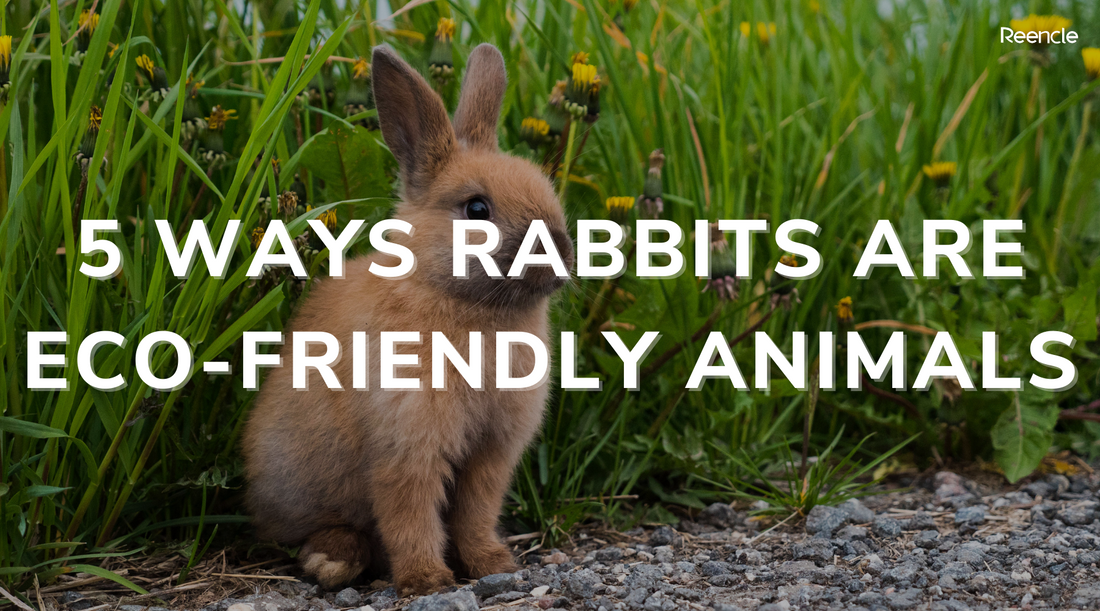According to the Chinese zodiac, 2023 is the year of the rabbit. This year is already filled with beautiful symbolism and meaning, and we wanted to add to that. Besides symbolizing elegance, beauty and mercy, rabbits are also beneficial to the environment in unique ways.

Photo Credit: Gary Bendig
Cardboard Recyclers
If you’re looking to repurpose some used cardboard, skip the landfill and hand them over to your rabbit(s). Rabbits are definitely low-maintenance in the entertainment department, as they’d be more than happy to chew on cardboard. Do you have any leftover toilet paper tubes? Now you know what to do with them!
Disclaimer: while it's safe for rabbits to eat cardboard, you don't want this to be its main source of food. Cardboard is great for wearing down rabbit's teeth, and contains a good amount of cellulose - a significant component of the leaves and vegetables they eat.
Rabbit Droppings = Fertilizer + Compostable
Not only are rabbits’ droppings great natural fertilizer, but they can also be composted! Given their herbivorous diet, their droppings cause no foul odour. They are also dense in nutrients and contain different kinds of minerals. If you’ve got a garden, you can directly use it as fertilizer for your soil, or add it to your compost machine or compost pile in order to turn it into compost for your soil. They also don’t carry or cause any disease and are completely safe to handle.
Reencle is an indoor compost machine that, you guessed it: can compost rabbit droppings! Though Reencle is primarily a food waste composter, rabbit droppings can also be turned into nutrient-rich compost within 2-24 hours. Not only can you reduce up to 90% of your household food waste but your rabbit can now contribute to saving the environment, too!
Rabbit Toys Can Be Found In Nature
Whether you just got a rabbit or have had one for a while, purchasing its toys causes money, and increases your (rabbit’s) carbon footprint due to the energy and resources used for the toys’ manufacturing, packaging and shipping process. You’d probably be able to find so many things in your backyard that could double as rabbit toys: branches, twigs and dried-out pinecones to name a few. Do make sure that you thoroughly inspect and clean anything before your rabbit plays with them though!

Photo Credit: Dean Ward
Recycled Paper Litter
Clay-based litter is commonly the go-to rabbit litter, but it’s bad for the environment and can be harmful to your rabbit’s health, too. Clay-based litter causes dust to be released into the environment which can cause respiratory inflammation in rabbits. Paper-based litter doesn’t harm your rabbit and is better for the environment as it’s recycled.
Prevent Overgrowing In Nature
Without rabbits, a lot of our downland* and cliff tops* would be taken over by overgrown gorse*, bramble* and hawthorn scrubs*. Rabbits nibble on growing shoots which encourages the growth of low-growing plants like vetches* and trefoils*. These low-growing plants then attract butterflies and provide suitable habitat for small ants.
*downland: gently rolling hill country
*cliff tops: an area of land at the top of a cliff.
*gorse: a yellow-flowered shrub of the pea family
*bramble: a prickly scrambling shrub of the rose family, especially a blackberry
*hawthorn shrubs: a thorny shrub or tree which can be planted into a hedge

Photo Credit: Andriyko Podilny
Depending on your circumstances, you may not be able to put these newly-learned information to use yet, but it's still valuable to know. If nothing else, knowing how the different species on our planet affect the environment (be it negatively or positively) is an added bit of knowledge you can carry with you.
We hope this year's Chinese New Year brings you all the prosperity, love, joy and happiness.

